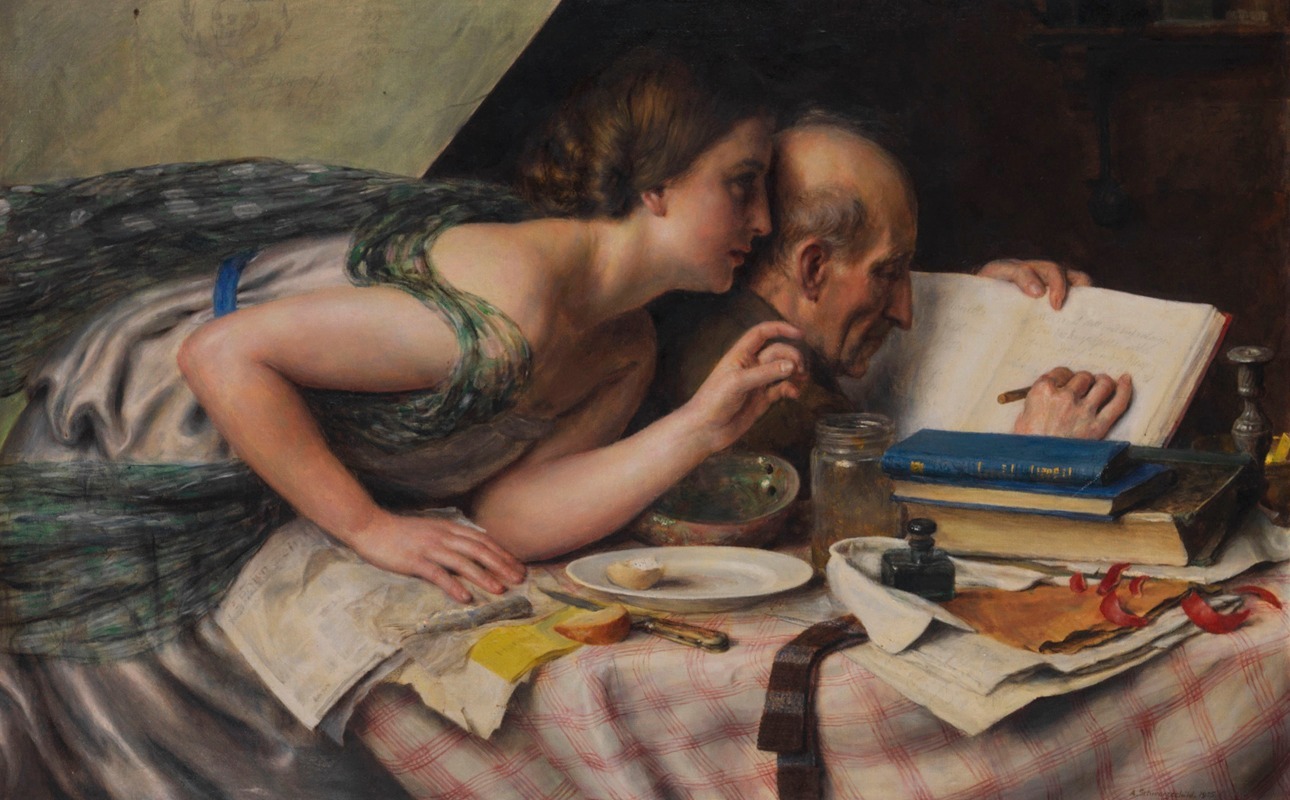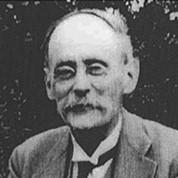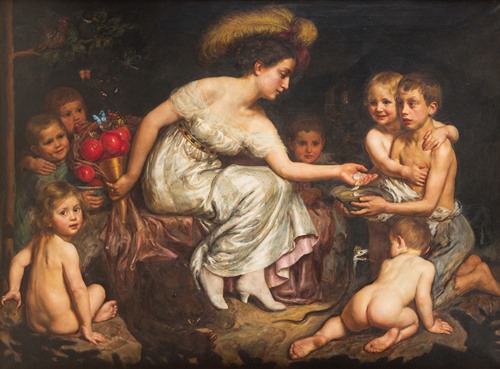

Alfred Schwarzschild was born in 1874, the second child of a wealthy Jewish family in Frankfurt, Germany. From 1890 to 1892, he studied under painter and draftsman Anton Burger in Kronberg and at the Academy of Fine Arts in Karlsruhe. After leaving the Academy, Schwarzschild studied with painter and illustrator Wilhelm von Diez, an Academy Professor who had a major influence on his work. In 1903, Schwarzschild exhibited his work at the Paris Exhibition and received an Honorable Mention.
During World War I, Schwarzschild joined the Imperial German Flying Corps as an observer, where he shot aerial photographs of the terrain and drew sketches of the enemy positions. For his endeavors, he was awarded the Iron Cross, Second Class. In 1924, Schwarzschild married Theodora Luttner and later, with their three daughters, settled in the Isar River area of Munich, where he shared an artist studio with painter Albert Weisgerber, whose work formed the bridge between Impressionism and early Expressionism.
From 1901, Alfred Schwarzschild regularly entered work in the international art exhibition in the Royal Munich Glass Palace. In 1901 he was awarded a medal fo his figurative oil painting “Übermut (High Spirits)” at the Glaspalast, Munich.. Between 1905 and 1909, Schwarzschild was also regularly represented by his work in the annual Great Berlin Art Exhibition. Painting in styles ranging fro Art Nouveau to New Objectivity, he became the great portrait painter of the Munich upper class.
Besides his portraiture work, Alfred Schwarzschild designed many souvenir postcards. He created a series of postcards with the image of a Munich child as a motif, a series on the topic of Oktoberfest, and a series on Munich’s famous Hofbräuhaus restaurant, founded in 1589 by the Duke of Bavaria. Schwarzschild often used his youngest daughter as the model for the postcards.
When Germany can under the rule of the National Socialist Party who placed restrictions upon the Jewish population, Schwarzschild found it extremely difficult, due to his Jewish origins, to sell his artwork. He fled to England in 1936, with the hope of earning a living; his family arrived in England in 1938, at which time the Nazi Party seized all his German assets. During the war years and despite war-time scarcities, Schwarzschild continued his artwork using whatever materials were available.
Known for his portraiture work, figurative paintings, and postcard images, Alfred Schwarzschild lived and worked in the United Kingdom until his death in London on August 19th of 1948. His artwork was deemed unworthy by the Nazi Party on the basis of it being sectarian; however, many of his works have survived and are in private collections and European museums.

